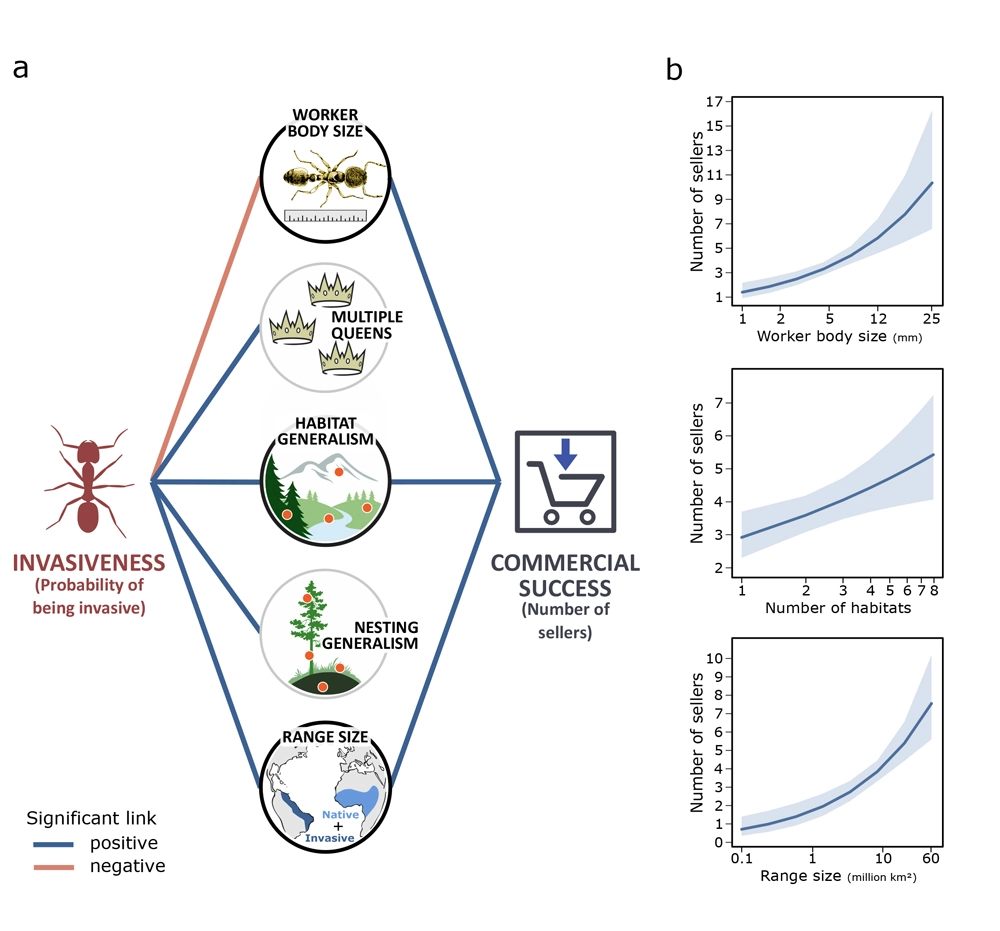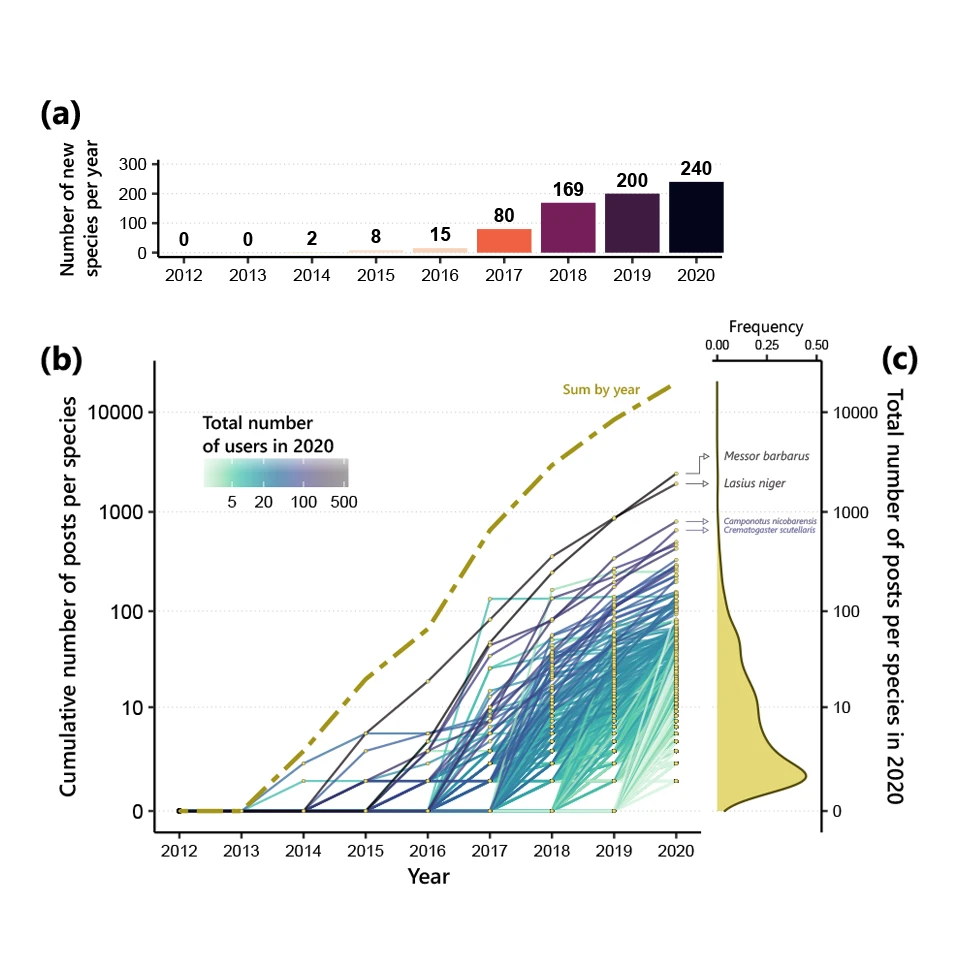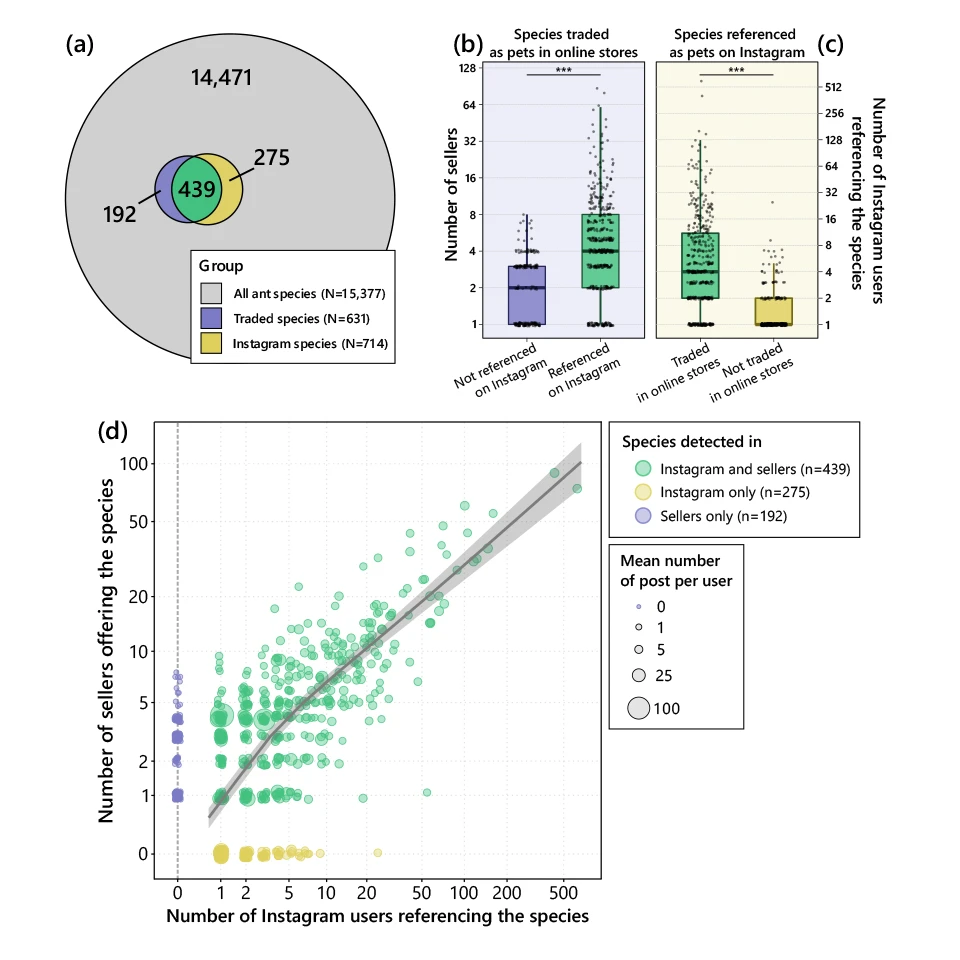

Over the last 30 years, the rise of the Internet has profoundly transformed most aspects of human activities from individuals’ social interactions to global trade activities and macroeconomic processes. This novel digital dimension is an inherent part of the natural world as it is the theatre of many human activities and is increasingly influencing them at global scale. The internet is also an unprecedented window on these human activities and on species (incl. humans) interactions. Recently, ecologists have started to explore this digital dimension to gather information that can help studying ecological patterns and processes. This novel approach has been coined iEcology (internet Ecology; Jaric et al. 2020)..
I use iEcology approaches to understand and monitor the global wildlife trade, and in particular internet-based emerging markets such as the exotic pet trade in invertebrates.
Like many other markets, the trade in wild animals and plants has largely shifted online. This rapid digitalization has coincided with—and may have driven—the exponential growth, globalization, and diversification of the exotic pet trade, particularly in invertebrates, but also in reptiles, amphibians, and fish. Conservationists have been caught off guard by the rapid emergence of online wildlife markets, and the protocols and tools needed to monitor and regulate them remain largely underdeveloped.
Using the pet trade in ants as a model system, I demonstrated that invasive species are favoured in the pet trade because they have ecological characteristics that increase their commercial success. These findings imply the existence of a socio-ecological feedback loop by which traded species tend to become invasive, and invasive species tend to be more traded. This vicious circle is likely to accelerate current invasions and facilitate the emergence of new invaders. This study also revealed an entirely overlooked globalized pet market, with more than 500 ant species, including 57 invasive ones, traded worldwide.

With billions of internet users posting daily, social media could be a powerful surveillance tool, but its reliability in tracking the global wildlife trade remains unclear. We tested whether Instagram data could predict the geographic distribution of pet stores and the taxonomic composition of traded species in the emerging pet trade in ants. I scraped ~38,000 Instagram posts from ~6,300 users referencing ants as exotic pets (#antloveforever 😁). Instagram user locations strongly correlated with ant seller locations globally and information fromposts detected 70% of traded species (439/631), including 87% of invasive species (59/68). Species popularity on Instagram also predicted the number of sellers offering them (R² = 0.77). Overall, Instagram provided affordable and reliable data for monitoring the ant pet trade. Easier data access could enhance global trade monitoring and support timely regulatory actions.

